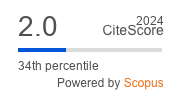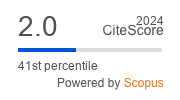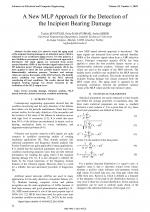| 3/2010 - 6 |
A New MLP Approach for the Detection of the Incipient Bearing DamageSENGULER, T. |
| Extra paper information in |
| Click to see author's profile in |
| Download PDF |
Author keywords
bearing damage, vibration analysis, MLP neural networks, feature extraction, condition monitoring
References keywords
neural(16), networks(10), bearing(8), applications(7), signal(6), processing(6), artificial(6), monitoring(5), electric(5), condition(5)
Blue keywords are present in both the references section and the paper title.
About this article
Date of Publication: 2010-08-31
Volume 10, Issue 3, Year 2010, On page(s): 34 - 39
ISSN: 1582-7445, e-ISSN: 1844-7600
Digital Object Identifier: 10.4316/AECE.2010.03006
Web of Science Accession Number: 000281805600006
SCOPUS ID: 77956621055
Abstract
In this study, it is aimed to track the aging trend of the incipient bearing damage in an induction motor which is subjected to an accelerated aging process. For this purpose, a new Multilayer perceptron (MLP) neural network approach is introduced. The input signals are extracted from power spectral densities (PSD) of the vibration signals taken from a 5-HP induction motor. Principal component analysis (PCA) has been applied to select the best possible feature vectors as a dimensionality reduction purpose. Variance and entropy values are used as the targets of the MLP network. The healthy motor condition was modelled by the MLP network considering all load conditions. The results showed that the incipient bearing damage was clearly extracted by the oscillations of the MLP output error. |
| References | | | Cited By «-- Click to see who has cited this paper |
| [1] A. H. Bonnet, G. C. Soukup, "Cause and analysis of stator and rotor failures in three phase squirrel cage induction motors", IEEE Transactions on Industry Applications, vol. 28, no. 4, pp. 921-937, 1992. [CrossRef] [SCOPUS Times Cited 596] [2] G. B. Kliman, J. Stein, "Methods of motor current signature analysis", Electric Machines and Power Systems, vol. 20, pp. 463-474, 1992. [CrossRef] [SCOPUS Times Cited 286] [3] G. J. Anders, J. Endrenyi, G. L. Ford, and G.C. Stone, "A probabilistic model for evaluating the remaining life of electrical insulation in rotating machines", IEEE Transactions on Energy Conversions, vol. 5, no. 5, pp. 761-766, 1990. [CrossRef] [SCOPUS Times Cited 50] [4] R. R. Schoen, T. G. Habetler, F. Kamran, and R. G. Bartheld, "Motor Bearing Damage Detection Using Stator Current Monitoring", IEEE Industrial Applications Meeting, vol. 1, pp. 110-116, 1994. [5] M. J. Castello, "Shaft voltages and rotating machinery", IEEE Transactions on Industry Applications, vol. 29, no. 2, pp. 419-425, 1993. [CrossRef] [SCOPUS Times Cited 109] [6] B. Yazici and G. B. Kliman, "An adaptive statistical time-frequency method for detection of broken bars and bearing faults in motors using stator current", IEEE Transactions on Industry Applications, vol. 35, no. 2, pp. 442-452, 1999. [CrossRef] [SCOPUS Times Cited 255] [7] J. R. Nicholas, "Predictive Condition Monitoring of Electric Motors", P/PM Technology, pp. 28-32, August 1993. [8] G. A. Bisbee, "Why Do Motor Shaft and Bearing Fail", TAPPI Journal, Vol. 77, No. 9, pp. 251-252, September 1994. [9] Samanta, K. R. Al-Balushi, S. A. Al-Araimi, "Artificial neural networks and genetic algorithm for bearing fault detection", Published online: 27 April 2005, Springer-Verlag 2005, Soft Comput (2006) 10: 264-271, 2006. [10] Karatoprak E., Senguler T., Ayaz E., Caglar R., and Seker S., "Spectral and Statistical Based Modeling for Bearing Damage in Induction Motors", The 6th IEEE International Symposium on Diagnostics for Electric Machines, Power Electronics and Drives, Cracow, Poland, 2007. [11] Taylor J. K., "Statistical Techniques for Data Analysis", Lewis Published, 1990. [12] Nandi, A. K., "Advanced digital vibration signal processing for condition monitoring", Proceedings of COMADEM 2000, Houston, pp. 129-143, 2000. [13] Mechanical systems and signal processing, Special issue on gear and bearing diagnostics, 2001. [14] McCormick A. C., Nandi A. K., "Classification of the rotating machine condition using artificial neural networks", Proceedings of IMechE, Part C: J Mech Eng Sci 211(C6):439-450, 1997. [CrossRef] [SCOPUS Times Cited 89] [15] Dellomo M. R., "Helicopter gearbox fault detection: a neural network based approach", Trans ASME J Vibration Acoustics 121:265-272, 1999. [CrossRef] [SCOPUS Times Cited 52] [16] Samanta B., Al-Balushi K. R., "Use of time domain features for the neural network based fault diagnosis of a machine tool coolant system", Proceedings of IMechE, Part I: J Syst Control Eng 215(I3):199-207, 2001. [CrossRef] [SCOPUS Times Cited 16] [17] Samanta B., Al-Balushi K. R., "Artificial neural network based fault diagnostics of rolling element bearings using time-domain features", Mech Syst Signal Processing 17:317-328, 2003. [CrossRef] [SCOPUS Times Cited 693] [18] IEEE Transactions on Neural Network, Special Issue on Artificial Neural Networks and Statistical Pattern Recognition, (AK Jain and J Mao guest editors), 1997. [19] Baraldi A., Borghese N. A., "Learning from data: general issues and special applications of Radial Basis Function networks", Technical report of international computer science research institute,Berkeley, TR-98-028, 1998. [20] Bishop C. M., "Neural networks for pattern recognition", Oxford University Press, Oxford, 1995. [21] Hornik K., Stinchcombe S., White H., "Multilayer feed forward networks are universal approximators", Neural Netw 2:359-366, 1989. [CrossRef] [SCOPUS Times Cited 17623] [22] Park J., Sandberg I. W., "Universal approximation using radialbasis-function networks". Neural Comput 5:305-316, 1993. [CrossRef] [23] Specht D. F., "Probabilistic neural networks". Neural Netw. 3:109 118, 1990. [24] Wasserman P. D., "Advanced methods in neural computing", Van Nostrand Reinhold, NewYork, pp. 35-55, 1995. [25] Yao X., "Evolving artificial neural networks", Proc IEEE 87:1423-1447, 1999. [CrossRef] [SCOPUS Times Cited 2326] [26] Jack L. B., Nandi A. K., McCormick A. C., "Diagnosis of rolling element bearing faults using radial basis functions", Appl Signal Processing 6:25-32, 1999. [CrossRef] [SCOPUS Times Cited 37] [27] Jack L. B., Nandi A. K., "Comparison of neural networks and support vector machines in condition monitoring applications", In Proceedings of COMADEM 2000, Houston, pp. 721-730, 2000. [28] Jack L. B., "Applications of artificial intelligence in machine condition monitoring", PhD Thesis, Department of Electrical Engineering and Electronics, University of Liverpool, 2000. [29] Cover T. M. and Thomas J. A., "Elements of Information Theory", Wiley, New York, 1991. [CrossRef] [30] Shannon C. E., "A Mathematical Theory of Communication", The Bell System Technical Journal, vol.27, pp. 379-423, 623-656, 1948. [31] Vaseghi V. S., "Advanced Signal Processing and Digital Noise Reduction", John Wiley, New York, pp. 38-42, 1996. [32] Vaseghi V. S., "Advanced Signal Processing and Digital Noise Reduction", John Wiley, New York, pp. 38-42, 1996. [33] Shlens J., "A tutorial on Principal Component Analysis, Systems Neurobiology Laboratory", Salk Institute for Biological Studies and Institute for Nonlinear Science, University of California, San Diego, 2005. [34] Smith L. I., "A Tutorial on Principal Component Analysis", University of Otago, New Zealand, 2006. [35] Hines J. W., "Matlab Supplement to Fuzzy and Neural Approaches in Engineering", John Wiley & Sons, Inc., pp 71-88, 1997 [36] Seker S., and Ayaz E., "A Reliability Model for Induction Motor Ball Bearing Degradation", Electric Power Components and System, Taylor & Francis Inc., Vol. 31, pp. 639-652, 2003. [37] 19 IEEE Std. 117-1974, IEEE Standard Test Procedure for Evaluation of Systems of Insulation Materials for Random-wound AC Electric Machinery. Web of Science® Citations for all references: 0 SCOPUS® Citations for all references: 22,132 TCR Web of Science® Average Citations per reference: 0 SCOPUS® Average Citations per reference: 598 ACR TCR = Total Citations for References / ACR = Average Citations per Reference We introduced in 2010 - for the first time in scientific publishing, the term "References Weight", as a quantitative indication of the quality ... Read more Citations for references updated on 2025-07-02 02:51 in 95 seconds. Note1: Web of Science® is a registered trademark of Clarivate Analytics. Note2: SCOPUS® is a registered trademark of Elsevier B.V. Disclaimer: All queries to the respective databases were made by using the DOI record of every reference (where available). Due to technical problems beyond our control, the information is not always accurate. Please use the CrossRef link to visit the respective publisher site. |
Faculty of Electrical Engineering and Computer Science
Stefan cel Mare University of Suceava, Romania
All rights reserved: Advances in Electrical and Computer Engineering is a registered trademark of the Stefan cel Mare University of Suceava. No part of this publication may be reproduced, stored in a retrieval system, photocopied, recorded or archived, without the written permission from the Editor. When authors submit their papers for publication, they agree that the copyright for their article be transferred to the Faculty of Electrical Engineering and Computer Science, Stefan cel Mare University of Suceava, Romania, if and only if the articles are accepted for publication. The copyright covers the exclusive rights to reproduce and distribute the article, including reprints and translations.
Permission for other use: The copyright owner's consent does not extend to copying for general distribution, for promotion, for creating new works, or for resale. Specific written permission must be obtained from the Editor for such copying. Direct linking to files hosted on this website is strictly prohibited.
Disclaimer: Whilst every effort is made by the publishers and editorial board to see that no inaccurate or misleading data, opinions or statements appear in this journal, they wish to make it clear that all information and opinions formulated in the articles, as well as linguistic accuracy, are the sole responsibility of the author.



